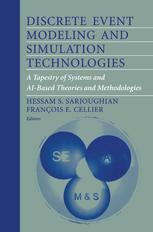

Most ebook files are in PDF format, so you can easily read them using various software such as Foxit Reader or directly on the Google Chrome browser.
Some ebook files are released by publishers in other formats such as .awz, .mobi, .epub, .fb2, etc. You may need to install specific software to read these formats on mobile/PC, such as Calibre.
Please read the tutorial at this link: https://ebookbell.com/faq
We offer FREE conversion to the popular formats you request; however, this may take some time. Therefore, right after payment, please email us, and we will try to provide the service as quickly as possible.
For some exceptional file formats or broken links (if any), please refrain from opening any disputes. Instead, email us first, and we will try to assist within a maximum of 6 hours.
EbookBell Team

5.0
40 reviewsThe initial ideas behind this edited volume started in spring of 1998 - some two years before the sixtieth birthday of Bernard P. Zeigler. The idea was to bring together distinguished researchers, colleagues, and former students of Professor Zeigler to present their latest findings at the AIS' 2000 conference. During the spring of 1999, the initial ideas evolved into creating a volume of articles surrounding seminal concepts pertaining to modeling and simulation as proposed, developed, and advocated by Professor Zeigler throughout his scientific career. Also included would be articles describing progress covering related aspects of software engineering and artificial intelligence. As this volume is emphasizing concepts and ideas spawned by the work of Bernard P. Zeigler, it is most appropriate to offer a biographical sketch of his scientific life, thus putting into a historical perspective the contributions presented in this volume as well as new research directions that may lie ahead! Bernard P. Zeigler was born March 5, 1940, in Montreal, Quebec, Canada, where he obtained his bachelor's degree in engineering physics in 1962 from McGill University. Two years later, having completed his MS degree in electrical engineering at the Massachusetts Institute of Technology, he spent a year at the National Research Council in Ottawa. Returning to academia, he became a Ph. D. student in computer and communication sciences at the University of Michigan, Ann Arbor.